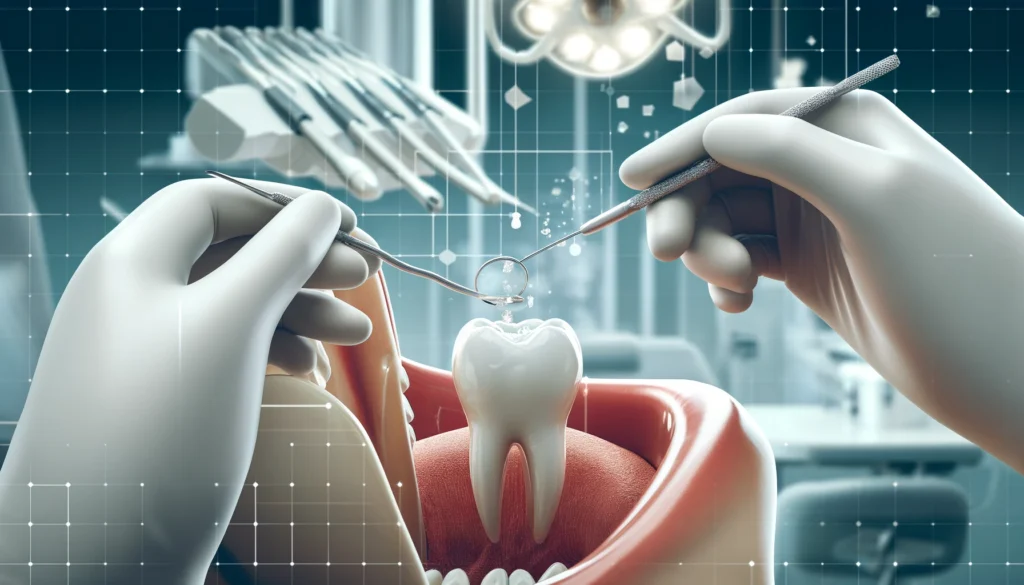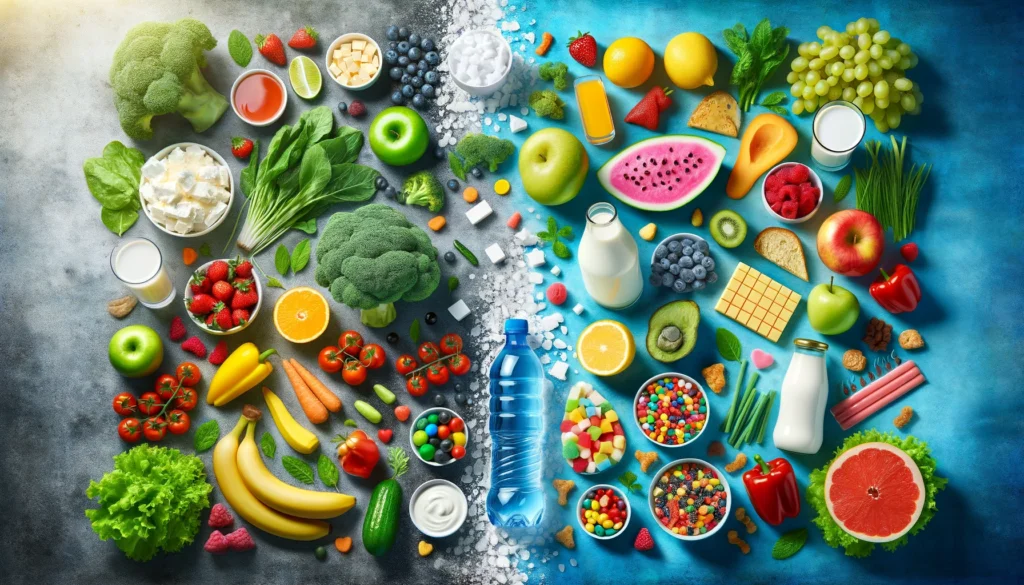Oral hygiene is paramount after a tooth extraction, as it significantly impacts healing and prevents complications such as infection and dry sockets. This article delves into how to approach teeth brushing post-extraction to foster optimal healing.
Tooth extraction involves removing a tooth from its dental alveolus or socket. Typically necessitated by severe decay, trauma, or crowding, extractions are categorized into simple and surgical types. Understanding the nature of the extraction is crucial as it influences subsequent care practices.
Immediate Post-Extraction Care
The primary goal in the initial 24 hours following an extraction is to ensure the formation and preservation of a blood clot at the site. This period mandates avoiding activities that might disrupt the clot, such as vigorous rinsing or brushing near the extraction site.
- To safeguard the newly formed blood clot within the first 24 hours post-extraction, patients are advised to adopt a cautious approach toward oral hygiene and dietary habits. It is crucial to abstain from smoking and consuming alcohol as these can significantly hinder the healing process.
- Additionally, patients should avoid using a straw when drinking as the suction can dislodge the blood clot, leading to a painful condition known as a dry socket. During this sensitive period, it is recommended to consume soft foods and liquids to minimize any pressure or disturbance to the extraction site. Adhering to these essential post-extraction care guidelines ensures a smooth and uneventful recovery.
- It is also important to note that the healing process can vary from person to person. Some individuals may experience slight discomfort, while others may not feel any pain. However, following these guidelines, regardless of how you feel is crucial to avoid any complications or delays in the healing process.
- Furthermore, it is recommended that strenuous physical activities be avoided for at least 24 hours after the extraction procedure to allow the body to rest and focus on healing.
- Patients should also avoid touching the extraction site with their fingers or tongues, as this can introduce bacteria and increase the risk of infection.
Taking care of your extraction site during the first 24 hours is crucial for a successful and speedy recovery.
Challenges of Oral Hygiene Post-Extraction
Post-extraction, patients might encounter challenges such as heightened sensitivity and potential pain, complicating routine oral care. These conditions necessitate a gentle approach to hygiene to mitigate pain and prevent infection.
- Healing Sensitivity: After tooth extraction, the gum, and surrounding tissues may become extremely sensitive, making regular brushing and flossing around the area more challenging.
- Risk of Infection: The open wound left by the extraction can be a breeding ground for bacteria, increasing the risk of infection if not properly cared for.
- Rinsing Cautions: While keeping the mouth clean is crucial, vigorous rinsing can disturb the clot and impede healing, requiring a delicate balance in oral hygiene practices.
- Limited Cleaning Methods: The usual oral hygiene tools, such as electric toothbrushes or water flossers, maybe too aggressive for the extraction site, necessitating softer, gentler alternatives.
- Pain Management: Effective oral hygiene post-extraction often involves managing pain, which may deter patients from performing even basic oral care because they fear causing more pain or damage.
- Adapting Oral Hygiene Techniques: Patients must learn new, gentler ways to keep their mouths clean without disturbing the healing process, which might involve using specially prescribed mouthwashes or softer, more pliable toothbrushes.
Guidelines for Brushing After Tooth Extraction
Resuming oral hygiene after a tooth extraction is critical but must be approached cautiously to avoid complications.
- It is generally recommended to start brushing your teeth again 24 hours after the extraction procedure. This delay allows the formation and stabilization of a blood clot at the extraction site, which is vital for natural healing.
- When you resume brushing, it’s important to use a gentle technique. The toothbrush should lightly touch the surfaces of the teeth, avoiding the extraction site to prevent any disturbance to the clot. Such a disturbance could lead to a painful condition known as a dry socket, where the underlying bone and nerves become exposed to air and food particles.
- For optimal comfort and safety, use a toothbrush with soft bristles. Soft-bristled brushes are less likely to irritate the extraction site and surrounding gum tissue. They also minimize the risk of accidentally scraping or poking the sensitive area.
- Additionally, the use of tepid water, rather than cold or hot, can help soothe the gums and reduce any sensitivity that might have developed following the extraction.
Choosing the Right Oral Hygiene Tools
Selecting the appropriate tools for oral hygiene post-extraction is about comfort, promoting healing, and preventing infection. As discussed, a soft-bristled toothbrush is essential, but the choice of cleaning agent is equally important.
For many patients, brushing alone might feel uncomfortable in the days following an extraction. In such cases, antiseptic mouthwashes can be a beneficial addition to the dental care regimen. These mouthwashes often contain ingredients like chlorhexidine or cetylpyridinium chloride, which have strong antimicrobial properties that help reduce the bacterial load in the mouth, thus lowering the risk of infection.
Alternatively, saline solutions—simple salt and warm water mixtures—can be used for gentle rinsing. Saline is particularly effective because it is non-irritating and can help to reduce swelling in gums and cleanse the wound site. Rinsing with a saline solution can flush out debris and pathogens without the burning sensation often associated with over-the-counter mouthwashes containing alcohol.
When using any mouthwash or saline solution, it is crucial to do so gently. Aggressive swishing can dislodge the blood clot at the extraction site. Instead, lightly move the liquid around the mouth or tilt the head from side to side, then let the liquid fall out of the mouth into the sink without forceful spitting.
Diet and Oral Health Post-Extraction
Diet plays a crucial role in post-extraction care.
- Importance of Soft Foods: Immediately after tooth extraction, choose soft foods that are easy to chew and swallow. Examples include yogurt, applesauce, and mashed potatoes. These foods prevent stress on the extraction site and facilitate healing.
- Nutrition Matters: Incorporate nutrient-rich foods that enhance healing. Options like smoothies, soups, and broths are gentle on the mouth and provide vitamins and minerals essential for recovery.
- Avoid Hard and Sticky Foods: Hard or crunchy foods like nuts and chips and sticky foods like caramel or gum should be avoided. They can disrupt the clot at the extraction site, leading to increased bleeding or infection.
- Limit Spicy and Acidic Foods: Highly seasoned, spicy, or acidic foods can irritate wounds. In the early stages of healing, avoid foods such as citrus fruits, tomato products, and foods heavily seasoned with spices.
- Hydration is Key: Stay hydrated with plenty of fluids. Avoid using a straw for drinking as the suction can dislodge the blood clot forming in the socket, a condition known as dry socket.
Long-Term Dental Care After Extraction
After a tooth extraction, regular dental check-ups are vital. These visits allow dentists to monitor healing and discuss potential future dental work, such as implants or bridges, to restore functionality and aesthetics to the patient’s dental arch.
- Regular Dental Check-Ups: Schedule regular visits with your dentist post-extraction to monitor the healing process. These check-ups help identify any potential issues early on, such as infection or improper healing.
- Oral Hygiene Maintenance: Practice good oral hygiene, including brushing and flossing regularly. Proper care of your teeth and gums prevents further oral health issues and supports overall dental health. Not brushing your teeth can lead to other dental problems.
- Preventive Care: Engage in preventive care by avoiding tobacco products, reducing sugar intake, and addressing any grinding or clenching habits that can adversely affect your oral health post-extraction.
By focusing on a suitable diet and maintaining diligent long-term dental care, patients can significantly enhance their recovery post-extraction and ensure the longevity of their dental health.

Dr. Orion Johnson is a dedicated and compassionate dentist committed to providing exceptional dental care to his patients.Dr. Johnson obtained his Doctor of Dental Surgery (DDS) degree from a prestigious dental school, where he excelled academically and clinically. He is licensed to practice dentistry and stays updated with the technology through continuing education and training.


